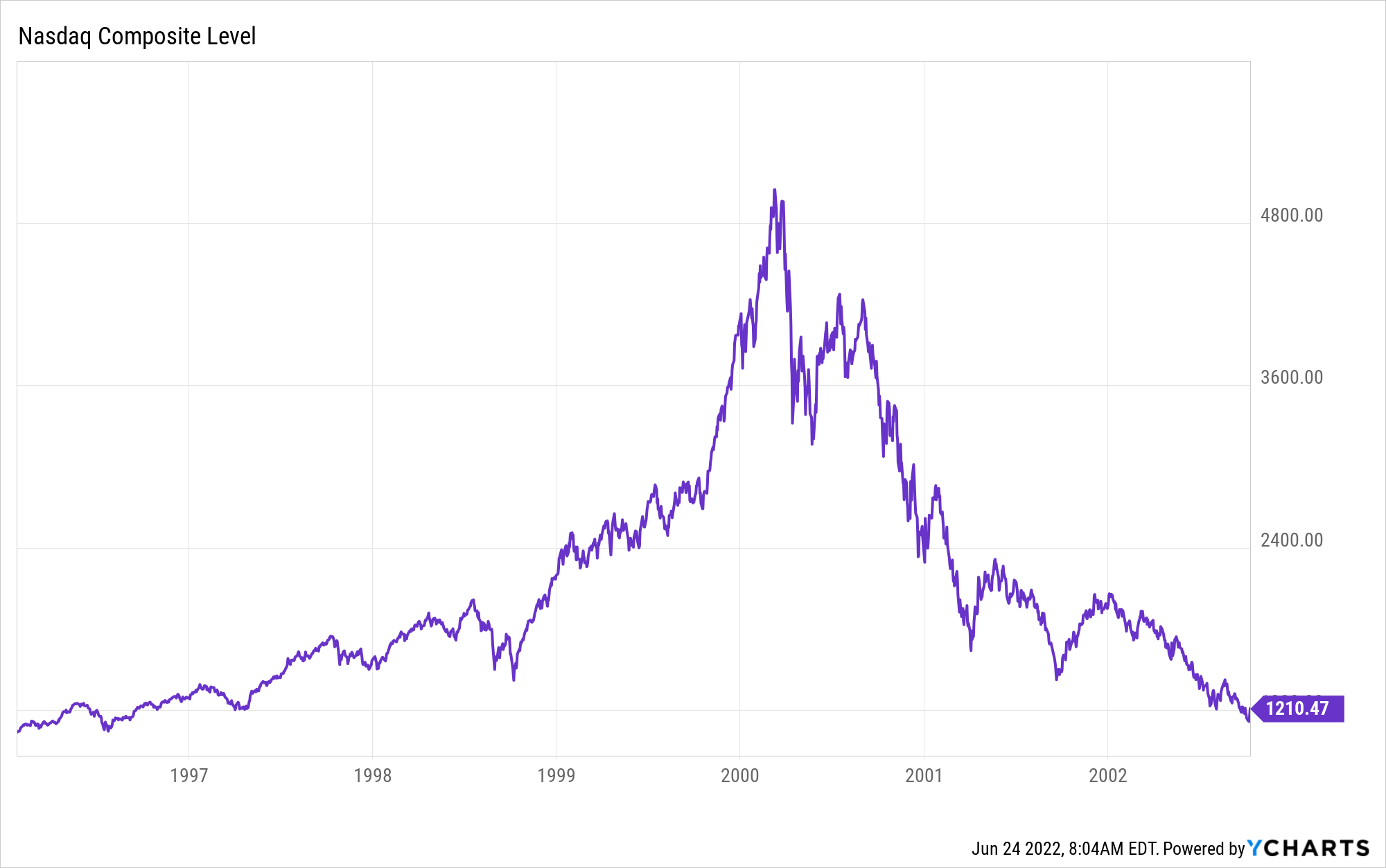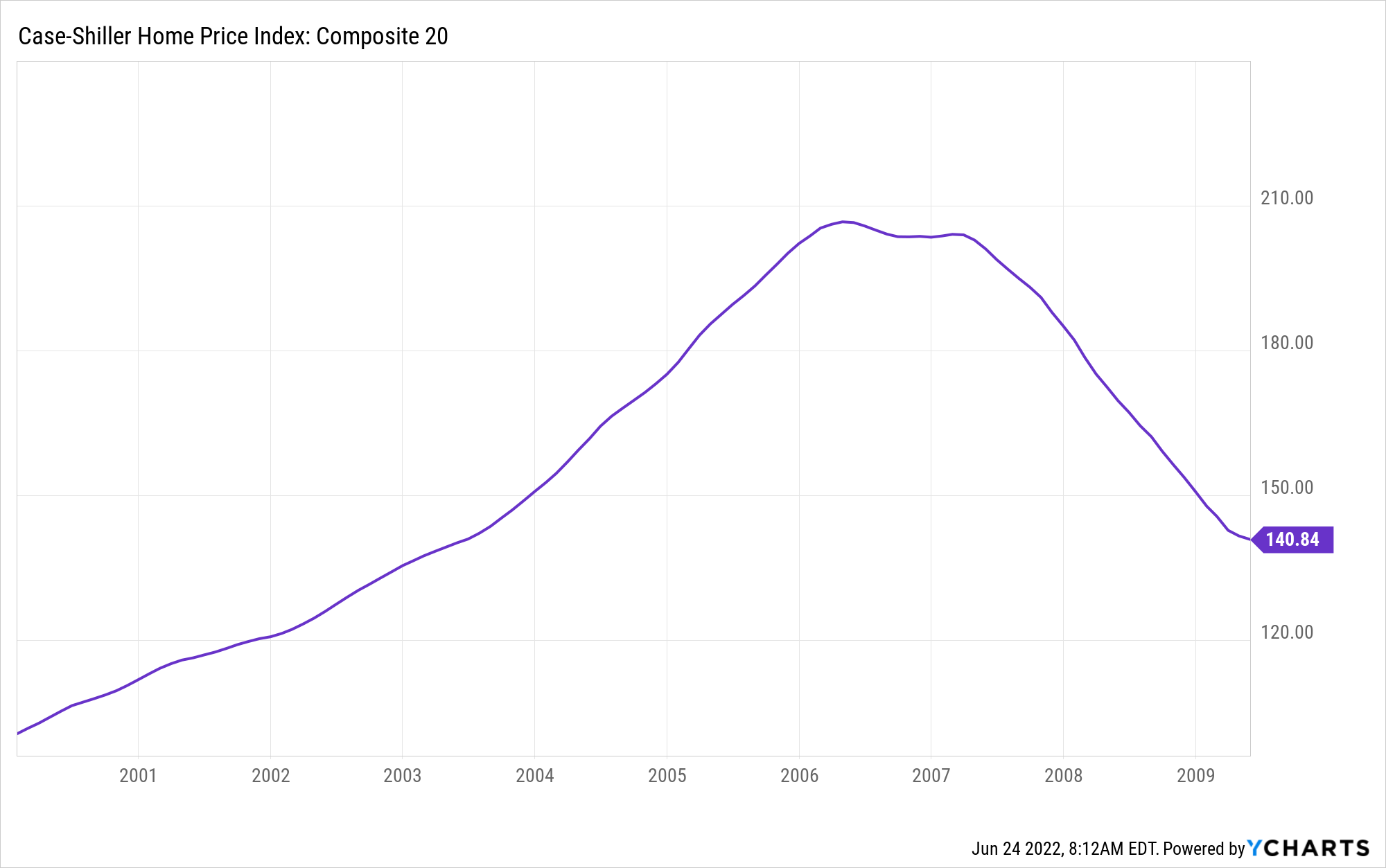Look. It’s pretty bad in the markets, and nobody can really tell you when it’s all going to end.
Inflation looks like it can keep running, but the economy is looking pretty exhausted and I don’t know how much interest it can carry.
Labor is stretched thin. Supply chains are stretched thin. Budgets are stretched thin too.
It’s hard times, for sure. And they’re likely to get harder before they get softer.
But there’s good reason to remain calm and even hum a happy little tune to yourself today.
And I’m going to explain why you should be happy that this bubble is bursting using three examples from the pretty recent past…
The Gold Bubble
Would you believe that once upon a time, stodgy old gold that barely moves a few percent a year was in the midst of an epic bubble?
Well, it was, and here’s what that bubble looked like as folks speculated the prices higher and higher…
Just before they sold the bottom out of the market:

Gold ran up from around $200 in the late 1970s up over $800 (300%) by the beginning of 1980…
Only to crash back down around $300, wiping out millions in speculative bets.
But what if you’d bought gold right after that bubble had popped? Well, you’d be sitting pretty right now…

You’d have missed the bubble, missed the crash, and still captured a 400%-plus gain.
The lesson here: Don't ever think that just because an asset was in a bubble and said bubble pops, you can’t make money off that asset again.
Markets overreact in both directions.
Euphoria sends prices up higher than they should be and misery sends them down lower like a pendulum that never quite hits on dead center.
The Tech Wreck
The gold bubble happened just at the start of my life, so maybe you don’t remember it. But this one you surely will…
I’m talking about the dot-com bubble that blew up anything even remotely related to the internet back in the late 1990s.
After inflating for years, it popped in epic fashion and wiped out literally billions of dollars of newfound wealth:

That’s practically a lost decade for anyone who rode the wave from start to lackluster finish.
But what about those who looked through the carnage and saw value shining through?
Well, once again, they’re sitting pretty on a very nice profit:

Even after this year’s massive drop for the tech-heavy Nasdaq, they’re still looking at nearly 1,000% gains!
The lesson here: Markets go up and they go down. But they go up more than they go down. And they NEVER go one direction forever.
Join Wealth Daily today for FREE. We’ll keep you on top of all the hottest investment ideas before they hit Wall Street. Become a member today, and get our latest free report: “How to Make Your Fortune in Stocks”The Best Free Investment You’ll Ever Make
It contains full details on why dividends are an amazing tool for growing your wealth.
The Housing Fiasco
I feel like I’m making my point here pretty well, but before I leave you, I’ll share one more example…
Back in the early 2000s as the tech bubble was deflating, a new bubble was forming.
Thanks to super-low interest rates and flexible loan terms, a real estate bubble was quickly developing.
And like all bubbles, it eventually got too big for the surface tension to hold and popped all over everyone.
It led the country and then the world into a recession.
And it wiped out trillions of dollars of wealth as millions of homeowners found themselves underwater and foreclosed on:

But after the bubble popped, there were a lot of deals to be had in the housing market. And because of the recession, rates had dropped again.
And those of us who took advantage and bought into the bubble after it had deflated are feeling pretty smart about our decision…

On average, our houses are worth double what we paid for them a little over a decade ago.
The lesson here is the same as the other two: Just because a bubble forms and then pops doesn’t mean there wasn’t real value in those investments.
Bottom Line
And the bottom line I’ll leave you with is that markets go up and down. And after they go down a lot, historically, they go back up a lot too.
When a bubble pops, be it in gold or housing or tech stocks — or everything, like this last one — investors who remain calm and keep their long-term focus are the only winners.
And investors who are bold enough to wade through the wreckage and sort out the treasure win even bigger.
So don’t panic. Don’t sell everything. And most importantly, don’t give up.
It’s not a rigged game. It’s just not slow-pitch softball, so you’re going to have to work a little.
Patience is a virtue. Time is your ally. And losses aren’t real until you make them real.
So stick to your guns and keep your eyes out for my and my colleagues’ articles.
We’re here to help you get through the worst of it and come out the other side smelling like roses and grinning like a butcher’s dog.
To your wealth, Jason Williams After graduating Cum Laude in finance
and economics, Jason designed and analyzed complex projects for the U.S. Army. He made the jump to the private
sector as an investment banking analyst at Morgan Stanley, where he eventually led his own team
responsible for billions of dollars in daily trading. Jason left Wall Street to found his own
investment office and now shares the strategies he used and the network he built with you. Jason
is the founder of Main Street
Ventures, a pre-IPO investment newsletter; the founder of
Future Giants, a nano cap investing service; and authors The Wealth Advisory income stock
newsletter. He is also the managing editor of Wealth
Daily. To learn more about Jason, click here. Want to hear more from Jason? Sign up to receive emails directly from him ranging from market commentaries to opportunities that he has his eye on. 

 @TheReal_JayDubs
@TheReal_JayDubs Angel Research on Youtube
Angel Research on Youtube

